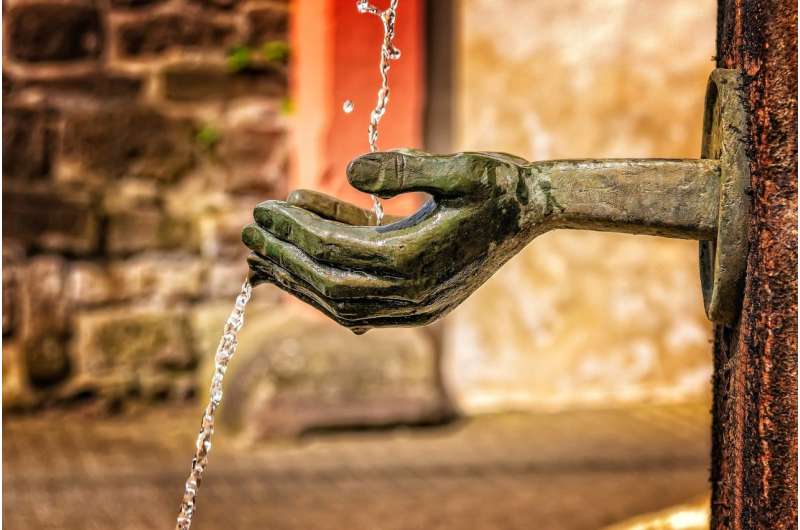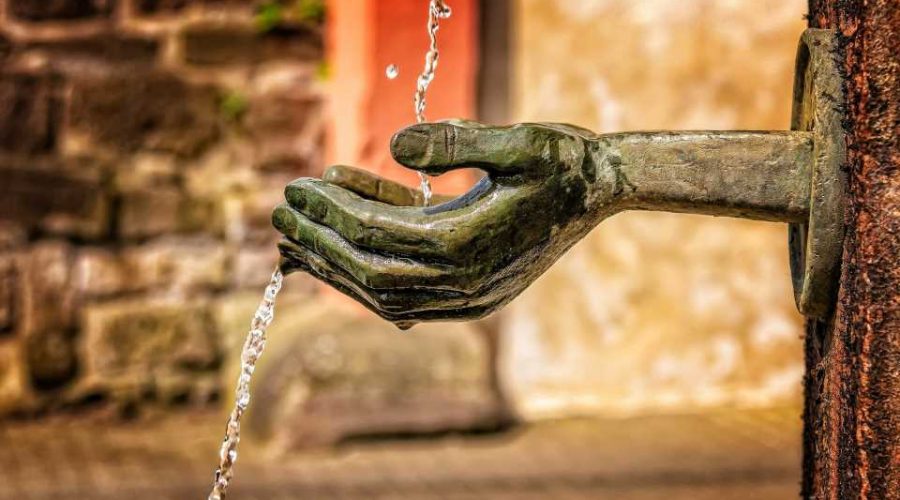COVID-19 bans affect women’s access to water in Pacific Islands

COVID-19-related restrictions have further exposed inequalities in people’s access to safe water, sanitation and hygiene (WASH) in the Pacific Island countries especially among women, experts say.
Women and girls have a larger role relative to men in WASH activities, including in agriculture and domestic labor. Ninety percent of the total population in the Pacific have access to an improved drinking water source, but this rate is significantly lower in rural areas. Kiribati, Solomon Islands and Vanuatu host 81 percent of the population without access to improved sanitation, according to the CARE Rapid Gender Analysis COVID-19 Pacific Region 2020 report.
“Women and girls feel the impacts first when it comes to lack of access to clean water and hygiene facilities. The impact of climate change, ongoing disasters and the COVID-19 pandemic will increasingly test the resilience of sanitation systems and the availability of safe water owing to floods, droughts and extreme weather patterns, impacting vulnerable communities in our Pacific communities,” says Shirleen Ali, Pacific senior gender and inclusion adviser for CARE International.
The Pacific Region lags in meeting the 2030 Sustainable Development Goal target for basic drinking water, sanitation and hygiene services. At the current rate of progress, four out of 10 people in the Pacific will still be without basic drinking water services; and almost seven out of 10 will not enjoy the health and economic benefits of basic sanitation or hygiene services.
In 2021, the International WaterCentre in Queensland, Australia, completed a study in partnership with the University of the South Pacific Emalus Campus in Vanuatu and World Vision, Vanuatu, which looks at WASH-related COVID-19 vulnerabilities experienced by predominantly female workers across short supply chains from garden to market in Vanuatu.
Pacific Island countries are characterized by short agri-food supply chains where the produce is sold at local markets and the majority of sellers are women.
“It has been estimated that between 60 and 80 percent of households are at least partially dependent on agri-food supply chains for their family’s livelihood and between 80 and 90 percent of market vendors in Vanuatu, Solomon Islands and Fiji are women,” says Mark Love, lead author of the study and Research research Fellow fellow at the International WaterCentre.
He notes that it is too early to gauge whether the pandemic has made access to WASH worse in the short agri-food supply chains and marketplaces because the Solomon Islands and Vanuatu, for example, experienced COVID-19 community transmission only in 2022.
“But we do know, for example, that in Solomon Islands and Fiji, the ‘return to village’ trend associated with people leaving town and returning to their villages during the pandemic puts significant stress on WASH infrastructure and services at the village level. This would have disproportionately impacted women and girls, who have the primary responsibility for water collection and use,” Love tells SciDev.Net.
“In our research, we found marketplaces in Vanuatu had numerous WASH vulnerabilities relating to both infrastructure and vendors’ use and behaviors; including insufficient and inadequate sanitation facilities, low tap to vendor ratio (often up to 80 people for one tap), sharing of face-wiping cloths amongst vendors, low soap prevalence in market toilets, and 4 of the 5 market rainwater tanks tested were ‘unsafe’ for human consumption,” he adds.
COVID-19 has overlapped with typhoons, droughts and other extreme weather in Pacific Island Countries and Territories. This has affected access to clean water substantially. For instance, since the pandemic began, roughly 20 percent of people in Kiribati and the Solomon Islands saw their water sources compromised, according to a UN Women Asia and the Pacific’s Women and the Environment: An Asia-Pacific Snapshot report.
Preliminary data from UN Women Asia and the Pacific’s upcoming Rapid Gender Assessment Surveys in the Pacific shows that across countries the most common reasons behind this had to do with water cuts on certain days, reasons specific to cyclone, flood, drought and other weather events, harassment en route to source, and not being able to afford the cost. Furthermore, an estimated seven percent of those who lost access to their water source noted that the source was closed due to COVID-19.
“Women’s water burdens have always been heavy and anecdotal evidence indicates that they remain that way in Pacific Island countries,” says Vivian Castro-Wooldridge, senior urban development specialist at the Asian Development Bank’s (ADB) Pacific Department.
“Additional burdens have come from women looking after children and other family members spending more time at home due to lockdowns, meaning more water is used and therefore must be collected and managed. This is particularly the case in informal settlements and rural communities that lack piped water, as men are generally reluctant to undertake water-related tasks because they are seen as women’s duties,” Castro-Wooldridge tells SciDev.Net.
ADB’s COVID-19 and Water in Asia and the Pacific Guidance Note shows that 36 percent of water resources, irrigation, and draining service providers, who responded to the ADB survey, assessed vulnerabilities of women-headed households, and nine percent did vulnerability assessments for women and girls.
Micronesia and Papua New Guinea are amongst the 10 countries in the Asia Pacific region most at water security risk due to COVID-19.
“Women and girls are empowered when they have control over the resources to meet their WASH needs and participate in the provision of WASH services,” Ali tells SciDev.Net.
Source: Read Full Article
